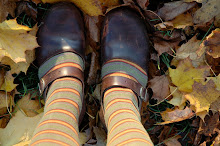 Not me... Although this glass of Rose was pretty delicious...
Not me... Although this glass of Rose was pretty delicious...I'm really referring to this kind of pickling:

I suddenly have an abundance of yellow cucumbers. Gee... Could it be because I planted, um, 15 plants???
 Well, I do love cucumbers. Dill pickles are quite tasty too. So, in the interest of preserving the bounty (which is what I am constantly doing these days), here's a very simple recipe for garlic dills. To maximize their flavor they will need to sit for a few weeks, so I'll let you know in a couple of weeks, just exactly how they turned out...
Well, I do love cucumbers. Dill pickles are quite tasty too. So, in the interest of preserving the bounty (which is what I am constantly doing these days), here's a very simple recipe for garlic dills. To maximize their flavor they will need to sit for a few weeks, so I'll let you know in a couple of weeks, just exactly how they turned out...Garlic Dills
makes 6 pints (approximately)
(adapted from 'Quick Dill Pickles' in the Kerr Kitchen Cookbook)*
2-2 1/2 Lbs. cucumbers, washed and sliced into 1/8-inch rounds or cut into spears
(if using pickling cucumbers, which is recommended, the quantity is approximately 7 Lbs.) If you have more than enough cucumber, just keep making batches of brine until you've packed all the jars you filled)**
6-12 heads of fresh dill (be sure to rinse the dill and pat dry before adding to the jars)
6-12 cloves of garlic, peeled
For the brine:
6 Cups of water (I used spring water)
3 Cups of distilled white vinegar (5% acidity)
1/2 Cup plus 2 Tb. Kosher salt
1/3 Cup pickling spice (optional)
Sterilize your jars and lids (I like the wide-mouth jars/lids for this - I find they are easier to pack) and ready the water bath.
Combine the brine ingredients in a large stockpot and bring to a boil. When jars and lids are ready, pack the cucumber slices into the hot jars along with 1 or 2 heads of dill and 1 or 2 cloves of garlic per each jar - leaving 1/2-inch head space. Pour the hot brine (including some of the pickling spice, if using) over the cucumbers and fill to within 1/2-inch of the jar rim. Using a clean butter knife or thin spatula, go around the inside edges of the jar to remove any air bubbles. Wipe the rims with a clean towel and place the sterilized lids on the jars. Lightly screw on the bands and process jars in a hot water bath for 15 minutes. Remove from the bath and check the seals. Any jars that did not seal properly can be refrigerated and used within a month or so.
 *For canning instructions and/or questions, please visit the website for The National Center for Home Food Preservation.
*For canning instructions and/or questions, please visit the website for The National Center for Home Food Preservation.**Many recipes I've seen regarding cucumber pickles say that to get a really crisp pickle you should soak the cucumber slices in an ice water bath for about 2 hours before canning. I didn't do this - my cukes had been in the refrigerator for a few days, so I skipped this step. I think in addition to 'icing' the cukes, it also helps to use pickling cucumbers, though any kind of cucumber will still work for pickling. Mine were rather large in circumference and will most likely not be too crisp (I personally don't mind).
***In case anyone is wondering - the 'yellower' pickles in the foreground of the above photo are 'Spicy Garlic Dills' that were made using a packaged pickle mix (Kerr's) and the addition of 2 garlic cloves and 1/2 tsp. red pepper flakes per jar.

















